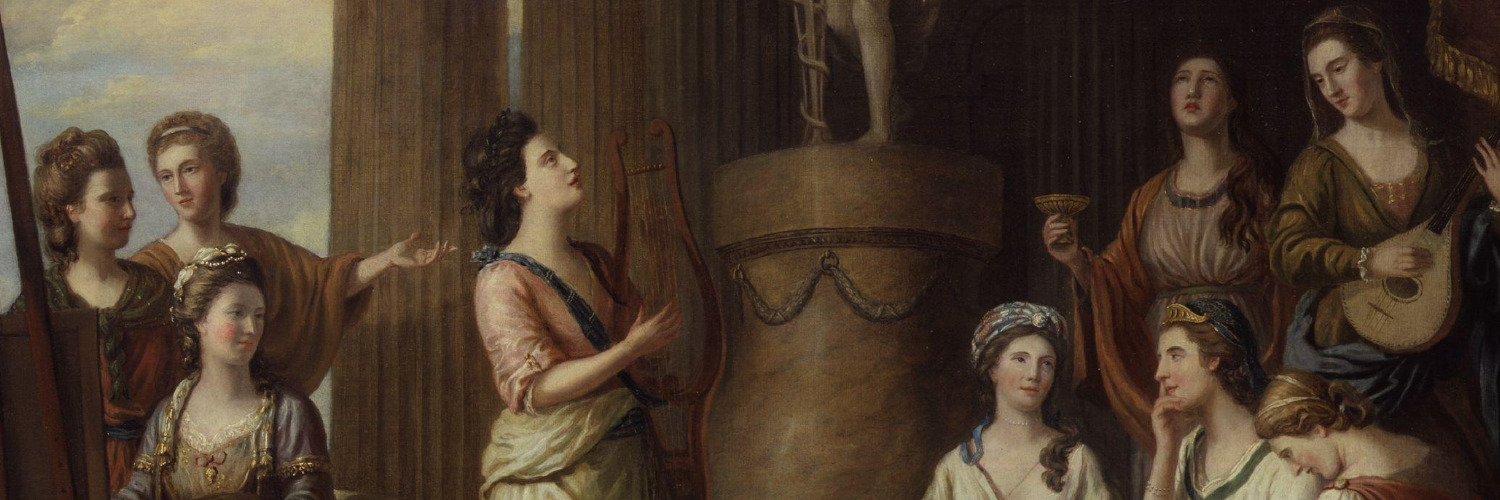- Physical form: One sheet folded into 2 leaves (19 x 23 cm)
- Cover: Miss Rickards / Hampstead
- PM: 12o’Clock / AU 7 / 1802 N.n
4o’Clock / AU 7 / 1802 EV
TwoPyPost / Unpaid / Stoke Newin[gton] - WM: J RISE / 1799[?]
- SM: Misc MS 4351
Aug 6th
I was just thinking of writing to you when I received your obliging letter, for it seemed to me a long time since I had seen or heard of you, & now I do not feel quite satisfied with only hearing, I want you to come & spend a week with me, not indeed just now, because every body is run away, but in a week or ten days my Brother & Sister & the Kinders will be returned,
& by that time you will have fagged enough to give yourself another holiday with a good conscience, so will you come? Mrs Rickards has no objection, have you Madam? There are really some very pleasant walks hereabouts, but then as I tell my Brother they are most of them towards Hampstead. O how I envy you the sight of the descending Balloon. What a glorious bustle, crowds assembling in a moment, fences broken down, handing Madame Garnerin out of her aerial car, how much alive all Hampstead must be!
I saw it too from the top of Mrs Eade’s turret
moving like a dusky spot thro the dark clouds— So you have got Mrs Riddle again at Hampstead, & by great
good
[fol 1v] good luck I hear she has lost her husband. I do not know whether I ought not to write her a congratulatory letter upon it. I hope you have got her selection in your society, there are really many pretty things in it.
I see no new books now, for there is no book Society at Newington,
—so I live in utter ignorance of all literary matters. I could tell you perhaps how many pearls were showered upon the head of the bride of Almamon, & how much marrow & sugar with how many baskets of eggs & fig’s Sultan Solyman eat for breakfast, for I have just been reading it in Gibbon,
but for the productions of the present day I know no more of them than a Hottentot, Mrs Hunter’s novel excepted, which she sent me.
It is not much either above or below the standard of the last; the same want of plan, & the same superabundance of trifling little circumstances. It is a great disadvantage to a woman that with the same eyes as a man, she does not see so much as a man ^does^—The confined range of domestic occupations, the minutiæ of dress & furniture, the “pride pomp & circumstance” of visiting do not furnish such interesting matter as the various occupations of men & the developement of characters in the trying & varied scenes which occur in the world at large. This, as I have often thought, greatly enhances the merit of Mme D’Arblay’s novels.
My niece is in Wales much delighted with her party & her tour. She makes a very good traveler, & sets herself, as all travellers should, above little difficulties. The Welsh Country people are
it
[fol 2r] [it s]eems sufficiently aware of tourists & when there is any thing in their accommodations or the œconomy of their house that they perceive English people stare at, they hope it will not be put in the book.— It is quite a pleasant walk from hence to the terrace upper Clapton.
I had no idea we were so near. I notice it, I confess, partly with a view to tempt you here; we take great pleasure as well as the Kinders in the thought that your friends will be still nearer us in winter. I do not know who the Mrs ^& Miss^ Walker’s are whom you mention, except they be Dr Walker’s wife & daughter
who are I believe at Hampstead, they I should imagine would be glad to see Mrs R.—I gr[blotted by seal] poor Mrs Stonard,
tho her shy & retired temper preve[nts her] from mixing much in society, she will be a great loss to all connected with her, for she is a truly worthy woman. Mr Barbauld joins me in every sentiment of affection & esteem towards yourself, & in begging to be most cordially remembered to Mrs Rickards & Miss Harrop, as well as to all our friends. Pleasure & regret Accompany our thoughts of them

